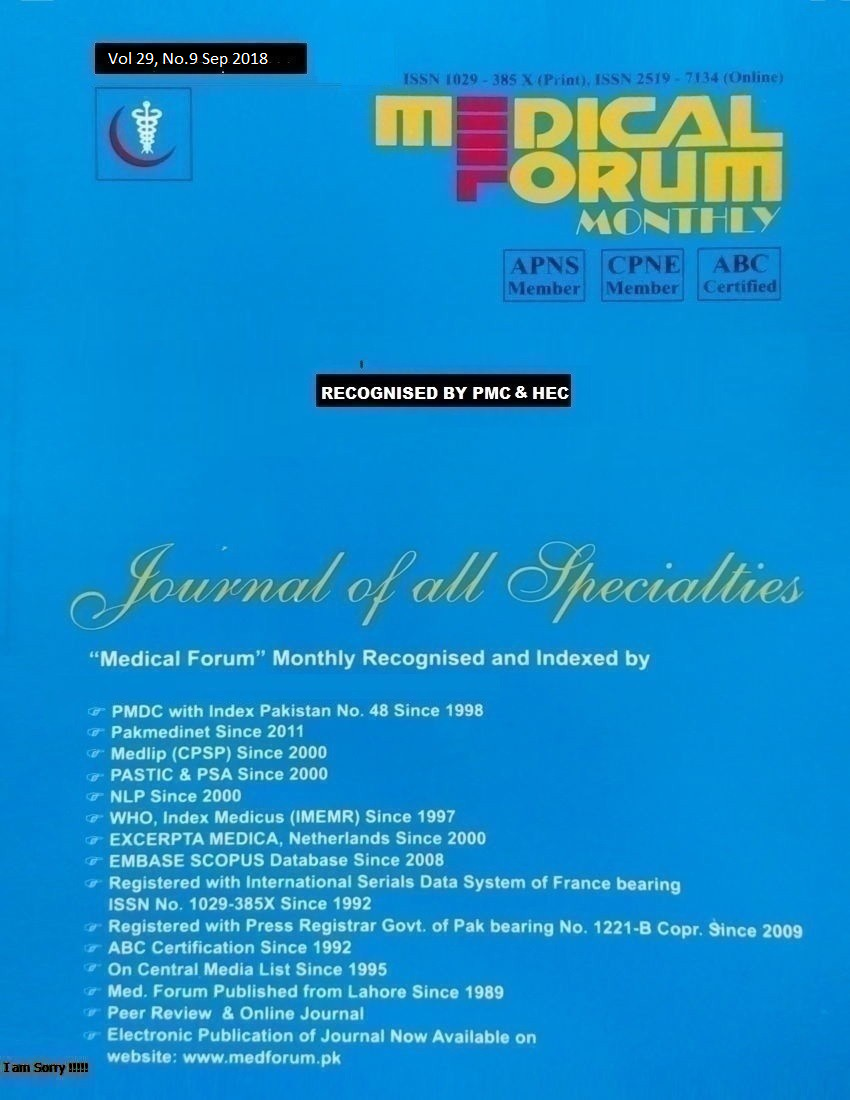
17. A Retrospective Study on the Principal of “No Space-No Cell” to Reduce Epithelial Cell Proliferation Resulting in Reduced Posterior Capsular Opacification Following Cataract Surgery
Ali Afzal Bodla and Muhammad Afzal Bodla
ABSTRACT
Objective: To identify achievable factors that can lead to reduction in incidence of posterior capsular opacification by control of postoperative epithelial cells proliferation and migration by good anatomic relation of IOL in the capsular bag.
Study Design: Retrospective study
Place and Duration of Study: This study was conducted at the Multan Medical and Dental College and Bodla Eye Care, Multan from August 2016 till July 2018.
Materials and Methods: A retrospective study performed at Multan Medical and Dental College and Bodla Eye Care, Multan on patients who had cataract extraction with intra ocular lens implant procedure by two surgeon. Retrospective analysis of 250 Eyes of 137 male and 113 female patients, who underwent phacoemulsification on ALCON, Infiniti system was done. Posterior chamber lens used was ALCON MA30AC multipiece posterior chamber lens with optic size of 6.0mm and over all length of 13.0 mm. Its a modified C-loop lens with anterior asymmetric biconvex configuration. Patients were followed up and incidence of posterior capsular opacification was observed, retrospectively for two years.
Results: A total of 250 patients were included in the study who completed the desired follow up span of 24 months to identify the incidence for posterior capsular opacification. Sex incidence shows 55% male and 45% females. Among different types of cataracts, 133 were cortical (53.2%), 65 Nuclear (26%), and 52 posterior capsular (20.8%) Incidence of PCO, after a follow-up period 24 months, was observed to be 15.2%. In first 6 months, only 4 patients (<2%) presented with posterior capsular opacification , while in 12 months 8 males and 2 females (4%) developed posterior capsular opacification . In 18 months period, number of patients with posterior capsular opacification increased to 16 males and 8 females (9.6%), and finally at 24 months, out of 137 males, 14 developed , posterior capsular opacification and out of 113 females, 5 developed posterior capsular opacification. Thus in 24 months, out of 250 eyes, 38 eyes developed posterior capsular Opacification, bringing an overall incidence to 15.2%.
Conclusion: Our study looked at the surgical techniques and factors pivotal to reduce incidence of posterior capsular opacification in patients undergoing cataract surgery. We believe that use of ALCON MA30AC multipiece posterior chamber lens with optic size of 6.0mm and overall length of 13.0 mm provided greater surface area of optic in contact with posterior capsule and is still a valid alternative to single piece PMMA lenses. Its overall length keeps the capsular bag taut with a symmetrical stretch, not allowing wrinkles formation. Thus a well fitted IOL, with atraumatic surgery, complete cortical clean up, and posterior capsular polishing, delays PCO by contact inhibition and barrier effect, to epithelial cells proliferation, and migration, on the principal of ''No space No cells.
Key Words: Cataract Extraction. Posterior Capsular Opacification, Intraocular Lens.
Citation of articles: Bodla AA, Bodla MA. A Retrospective Study on the Principal of “No Space-No Cell” to Reduce Epithelial Cell Proliferation Resulting in Reduced Posterior Capsular Opacification Following Cataract Surgery. Med Forum 2018;29(9):68-71.
